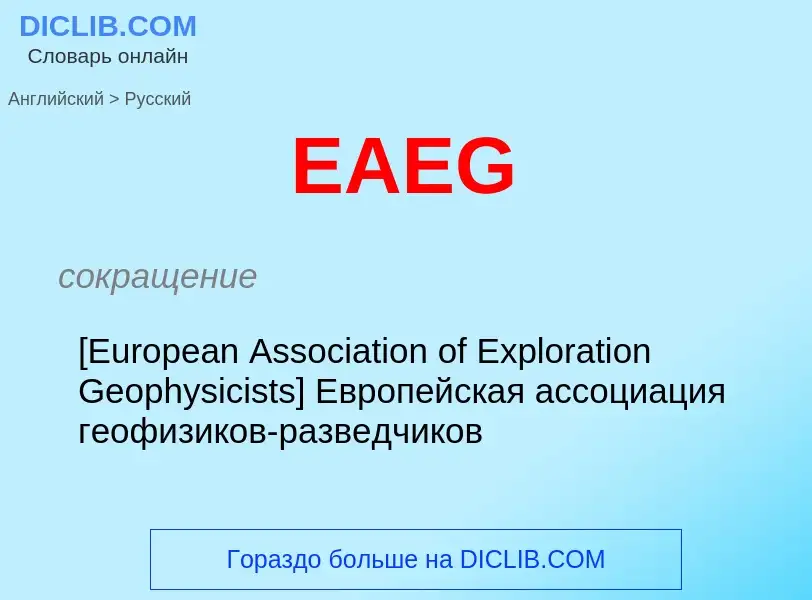Перевод и анализ слов искусственным интеллектом
На этой странице Вы можете получить подробный анализ слова или словосочетания, произведенный с помощью лучшей на сегодняшний день технологии искусственного интеллекта:
- как употребляется слово
- частота употребления
- используется оно чаще в устной или письменной речи
- варианты перевода слова
- примеры употребления (несколько фраз с переводом)
- этимология
EAEG - перевод на русский
сокращение
[European Association of Exploration Geophysicists] Европейская ассоциация геофизиков-разведчиков
Википедия
The East Asia Economic Caucus (EAEC) or East Asia Economic Group (EAEG) was a regional free trade zone (FTA) proposed in 1997 by Malaysian Prime Minister Mahathir Mohamad and encompasses most nations of East and Southeast Asia (ESEA). However, Japan at the time refused participation due to the exclusion of the United States, which at the time had tariffs on each other, has an economy too deeply interlinked through trade, and was still reeling from the effects of the Japanese asset price bubble. They also added that they were already members of the Asia-Pacific Economic Cooperation (APEC) and many other notable regional organizations in ESEA. South Korea was also extremely dissatisfied with the idea of placing Japan at the center of the proposed organization due to historical connotations.
The EAEC was a reaction to ASEAN's integration into APEC by Mahathir, who is known for his strong Pan-Asian standpoint. His suggestion apparently articulated his dissatisfaction with ASEAN joining APEC, which includes Western nations, an idea he was strongly opposed to. Therefore, EAEC was basically an APEC without Northern America and Oceania. Nevertheless, it was never put into action officially.
When ASEAN+3 was institutionalized in 1999, it was considered the successor of EAEC, which prompted Malaysia to declare that the EAEC has nevertheless still been realized. In 2005, with Japan's support of the ASEAN+3 agreement, it was agreed in return to include Australia, New Zealand, and India into the East Asia Summit, a separate organization.
More recently, the Regional Comprehensive Economic Partnership (RCEP) has also been considered identical to the EAEC, except this time with the inclusion of Australia and New Zealand. The RCEP is the first free trade agreement which included China, Indonesia, Japan, and South Korea together, four of the five largest economies in ESEA. The partnership is notable over the absence of the United States. Several analysts have predicted that the RCEP has the potential to leave the U.S. behind in economic and political affairs within the next few decades especially in the Asia-Pacific.

